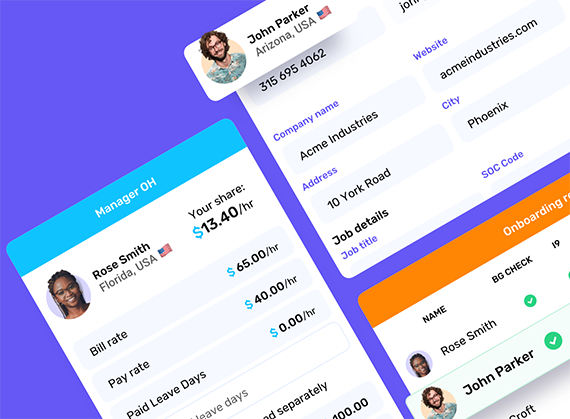Is your worker an employee or an independent contractor? The lines have been blurred by pending lawsuits aimed at companies like Uber and Lyft to start treating their California independent drivers like full-time employees. On August 11, 2020, a judge ordered these organizations to pony up taxes, penalties, and other restitution. Under California’s new Assembly Bill 5, companies using contract workers should reassess how they classify, how they pay, and what benefits they offer.
The legal tests on which employees are 1099 and which aren’t; have only just begun. It’s getting complex for organizations that have multiple types of workers on payroll. However, the IRS classifies work status by three categories: Behavioral Control; Financial Control; and Relationship Factors. The categories are intended to define how employers classify workers.
This blog is the first in a series which will review the IRS three designations. Let’s start by reviewing the concept of Behavioral Control as it pertains to your workforce.
Employee or Independent Contractor?
IRS 20-Factor Test: Behavioral Control
The IRS has factors that define if a person is performing services as a contractor or employee. Big money is at stake: If the worker is independent, in most states, the employer can skip unemployment taxation, insurance, and other fees generally associated with the full-time worker. Let’s start with the Behavioral Control test. Here is what the IRS says.
Behavioral Control Factors have to do with whether the employer directs or controls how the worker completes tasks. If the employer “has the right to direct and control the work,” the worker is an employee. This includes the following:
- Instructions
Is the employee required to follow instructions about when, where, and how to do the work?
The more detailed the instruction, the more likely the IRS will consider the worker an employee.
- Training
Did the worker receive initial and continuing training from the employer or the employer’s agent?
Independent contractors are not normally trained by the employer.
- Hiring, supervising, and paying assistants
Was the worker hired as an assistant, supervised, trained, and paid by the employer?
Generally, they would be considered an employee by the IRS.
- Continuing relationship
If there is a continuing relationship (even if occurring at frequent but irregular intervals), there is likely an employment relationship.
- Set work hours
If the business sets the workers’ hours of work, the worker will generally be an employee; an independent contractor would set their own schedule.
- Full-time work
An employee could work full-time for an employer, but an independent contractor works the hours and days of their own choosing.
- Work was done on-premises
If the work is required to be, or is usually performed on the premises of the business entity, this can speak to the worker as an employee. Independent contractors can work from anywhere at any time.
- Order or sequence of the work
The IRS suggests that evidence showing the worker was required to work in a particular order or in a certain way could suggest they are an employee.
An independent contractor works in the sequence they choose.
- Oral or written reporting
An employee will be required to submit regular written reports to the employer to show the completion of work.
Keep in mind that the IRS rules are cumulative; just because you require some of these categories from your independent contractor doesn’t mean you’re violating these rules. Next in the series, we’ll look at the second IRS designation, Finance Control.
Talk to FoxHire if you’re looking for a 1099 or full-time worker. We can help you find and employ talent without the risks associated with hiring.






